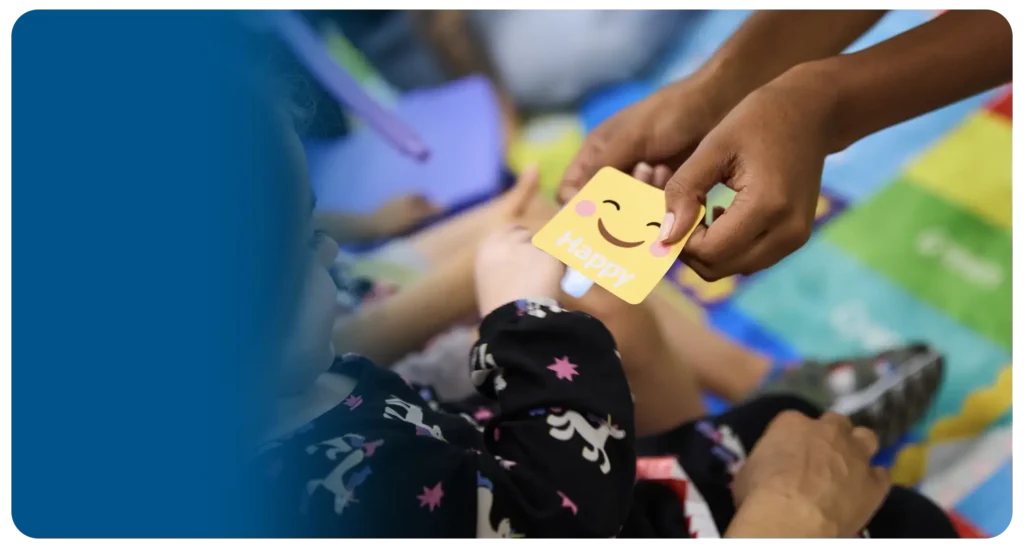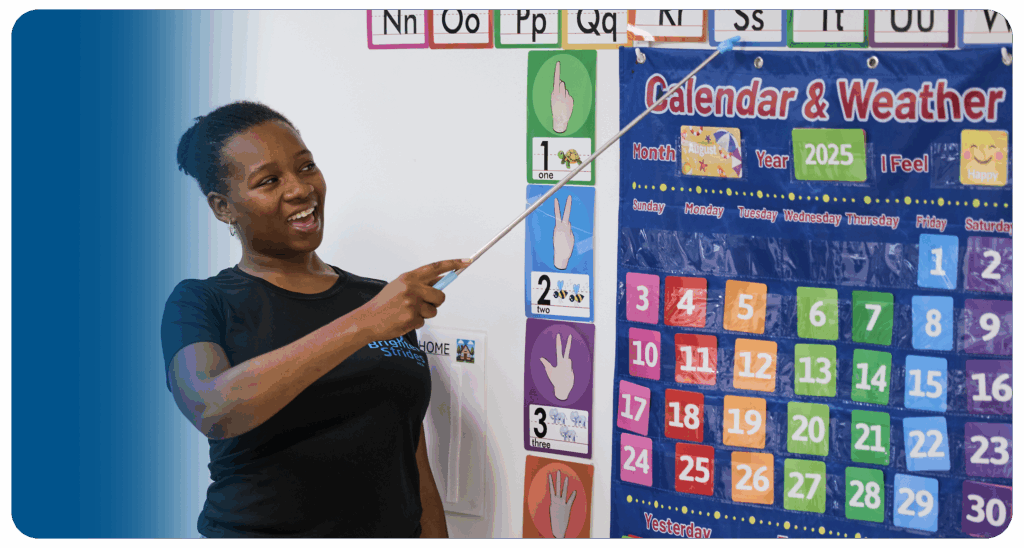Understanding Visual Schedules
Visual schedules are powerful tools that offer numerous benefits for individuals with autism. These schedules use visual aids to represent the activities in a person’s day or a part of their day, providing a clear, visual pathway through daily activities. By outlining what will happen, where, and in what sequence, visual schedules enhance comprehension, establish routines, reduce anxiety, and promote flexibility [1].
Benefits of Visual Schedules
Visual schedules offer several key benefits for individuals with autism. These benefits include:
- Supporting Organization and Communication: Visual schedules serve as supportive tools that help individuals organize their daily lives and facilitate communication without relying solely on spoken language. They provide a clear visual representation of tasks and activities, aiding in understanding and following directions.
- Reducing Anxiety and Enhancing Transitions: Visual schedules help to reduce scheduling-related anxiety by providing a predictable and structured framework. They facilitate smoother transitions between activities by visually preparing individuals for upcoming changes in routine. By knowing what to expect, individuals with autism can navigate transitions more successfully and with reduced stress.
- Reinforcing Lessons and Developing Skills: Visual schedules can reinforce lessons and help individuals develop new skills. By breaking down complex tasks into smaller, manageable steps, visual schedules provide a visual guide to follow. This visual support aids in the acquisition of new skills and promotes independence and confidence [2]
Read about: Unlocking Progress Through Structured Autism Routines
Importance for Autistic Individuals
Visual schedules play a crucial role in supporting the unique needs of autistic individuals. These schedules are particularly beneficial for individuals who are nonspeaking or have limited verbal communication skills. By using visual aids, such as pictures, symbols, or written words, visual schedules help autistic individuals communicate, follow directions, and carry out daily tasks more effectively.
Furthermore, visual schedules serve as lighthouses for autistic individuals, guiding them through their daily activities. They provide a clear structure and visual representation of the tasks and activities, enhancing comprehension and reducing anxiety. Visual schedules also teach flexibility by introducing individuals to different routines and helping them adapt to changes in their environment [3].
In the next section, we will explore how to create effective visual schedules tailored to individual needs and involving the individual in the schedule creation process.
Creating Effective Visual Schedules
When it comes to using visual schedules for individuals with autism, creating schedules that are tailored to their individual needs is key. These schedules can be as broad as an entire day’s activities or broken down into multiple schedules to suit individual routines and goals. The goal is to help individuals develop new skills, meet expectations, and reduce dependence on caregivers, teachers, and parents [2].
Tailoring to Individual Needs
To create an effective visual schedule, it’s important to assess the individual’s needs and abilities. Understanding their preferences, strengths, and challenges will help you tailor the schedule to their specific requirements. Consider factors such as their attention span, ability to process information, and their skill level. Starting with just one picture and gradually increasing the length and complexity of the schedule can ensure that it aligns with their abilities and helps them build on their skills.
Customizing the visual schedule with motivating pictures or photographs can also enhance attention and engagement. By incorporating images that are personally meaningful to the individual, you can increase their interest and help them stay focused on the task at hand. For example, if the individual enjoys playing with blocks, you can use a picture of blocks to represent playtime in the schedule.
Involving the Individual in Schedule Creation
Involving the individual in the process of creating the visual schedule can have numerous benefits. It gives them a sense of ownership over their day and helps them develop decision-making skills. When individuals have a say in their daily activities, they may feel more motivated and engaged in following the schedule.
When creating the schedule together, explain each activity using simple and clear language. This can help the individual understand and mentally prepare for what the next day will hold. Encourage them to express their preferences and provide input on the visuals used in the schedule. For instance, if they prefer the color blue, consider incorporating blue elements into the visuals.
By involving the individual in the creation of their visual schedule, you are empowering them to take an active role in managing their day, fostering independence and self-determination.
To effectively implement visual schedules, it’s essential to choose a method of display that works best for the individual, whether it is digital or paper-based. Introduce and explain the schedule to the individual, ensuring they understand how to read and use it. Stay consistent in referring to the schedule throughout the day and make any necessary modifications based on the individual’s response and progress.
Remember, visual schedules are flexible tools that can be adapted and modified as needed. Regularly evaluate and update the schedule to reflect any changes in routines or goals. By tailoring the visual schedule to the individual’s needs and involving them in the process, you can create an effective tool that promotes organization, independence, and a sense of control for individuals with autism.
Types of Visual Schedules
When it comes to utilizing visual schedules for individuals with autism, different types of schedules can be beneficial, catering to various learning styles and levels of understanding. These include object and TOBI schedules, photo and picture schedules, and written schedules.
Object and TOBI Schedules
Object and TOBI (Total Ongoing Behavioral Intervention) schedules use tangible objects or symbols to represent activities or tasks. These schedules are particularly helpful for individuals who better understand and relate to real-life objects rather than pictures or written words. For example, a child may use miniature toy cars to represent different activities throughout the day, such as playtime, mealtime, and bedtime. Object and TOBI schedules provide a concrete representation of the schedule, making it easier for individuals to comprehend and follow along with their daily routine.
Photo and Picture Schedules
Photo and picture schedules utilize visual representations of activities or tasks through photographs, line drawings, clipart, or realistic images. These schedules are more commonly used and can be tailored to the individual’s specific needs and preferences. For individuals who respond well to visual stimuli, photo and picture schedules provide a clear and concise way to understand and navigate their daily routines.
Line drawing pictures are often used as a starting point for visual schedules. They can be simple, abstract line drawings or more detailed and colorful visuals. Real photographs can also be used, especially for individuals who have difficulty connecting with line drawings. Additionally, functional object schedules can be beneficial for those who understand objects better than pictures. These schedules use actual objects to represent activities or tasks, such as a toothbrush to symbolize brushing teeth or a spoon to represent mealtime.
Visual schedules can start with just one picture to align with a child’s attention span and processing abilities. As the child becomes more familiar with the pictures and routines, the length of the schedule can gradually increase. It can range from one picture to partial-day schedules, short-term schedules, half-day schedules, and eventually full-day schedules. Full-day schedules provide an overview of the entire day, offering a structured sequence of events and reducing anxiety in individuals with autism [1].
Written Schedules
Written schedules use words to outline the activities or tasks in an individual’s day. These schedules can be tailored based on the individual’s reading level, processing ability, and comfort with written language. They can resemble a typical timetable or checklist of activities, aiding in structuring and organizing the individual’s routine. Written schedules are particularly helpful for individuals who have well-developed reading skills and find comfort in written instructions and reminders.
When implementing visual schedules, it’s important to consider the individual’s preferences and learning style. Some individuals may benefit from a combination of different types of visual schedules, while others may respond more effectively to a specific type. By utilizing the appropriate visual schedule, individuals with autism can enhance their understanding, independence, and ability to navigate their daily activities with confidence.
Read about: Key Interventions for Autism
Implementing Visual Schedules
Once you have created an effective visual schedule tailored to the individual’s needs, the next step is to implement and utilize it successfully. Implementing visual schedules involves designing the format and ensuring consistency and monitoring.
Designing the Format
When designing the format of a visual schedule, several factors need to be considered. These include the form of representation (objects, photos, icons, words), the length of the schedule, the method of manipulating the schedule, the location of the schedule, and the initiation of using the schedule.
The form of representation should be chosen based on the individual’s preferences and comprehension abilities. Some individuals may respond better to objects or symbols, while others may benefit from photos or written words. It’s important to select a format that the individual can easily understand and engage with.
The length of the schedule will depend on the individual’s needs and the complexity of their daily routine. Some individuals may require a schedule that covers an entire day, while others may benefit from schedules that focus on specific activities or time periods.
Regarding the method of manipulating the schedule, consider whether the individual will physically interact with the schedule by moving objects or whether a digital format would be more suitable. The location of the schedule should be easily accessible and visible to the individual, ensuring they can refer to it easily throughout the day.
Lastly, the initiation of using the schedule is important. Introduce and explain the visual schedule to the individual, ensuring they understand its purpose and how to use it. Encourage and support their independence in referring to the schedule regularly.
Consistency and Monitoring
Consistency is key when implementing visual schedules. The schedule should be consistently referred to and followed by caregivers, teachers, and parents. This helps establish routine and predictability, enhancing the individual’s understanding and adherence to the schedule.
As the individual begins to use the visual schedule, it’s crucial to monitor their response and make necessary modifications. Pay attention to how well the individual is engaging with the schedule and whether any adjustments need to be made. Be open to feedback from the individual and make changes accordingly to optimize the effectiveness of the schedule.
Remember that visual schedules are not static and may need to be modified over time to accommodate the individual’s changing needs, routines, and goals. By monitoring and adapting the schedule as necessary, you can ensure it remains a valuable tool in helping the individual develop new skills, meet expectations, and reduce dependence on caregivers, teachers, and parents.
Implementing visual schedules requires careful design and consistent implementation. By considering the format of the schedule and maintaining consistency while monitoring its effectiveness, visual schedules can provide valuable support for individuals with autism, helping them navigate their daily activities with increased independence and confidence.
Visual Schedules in Different Settings
Visual schedules are a valuable tool in supporting individuals with Autism Spectrum Disorder (ASD) in various settings. By providing a visual representation of activities and routines, visual schedules help individuals with autism navigate their daily lives with increased structure and predictability. In this section, we will explore how visual schedules can be effectively implemented in both school and home settings.
School Setting
In the school setting, visual schedules play a crucial role in supporting students with autism. These schedules are designed to communicate the sequence of upcoming activities or events through objects, photographs, icons, or words, tailored to match the individual needs of students with ASD.
Implementing visual schedules in the school setting involves designing the format based on individual needs. Factors to consider include the form of representation (objects, photos, icons, words), the length of the schedule, the way of manipulating the schedule, the location of the schedule, and the initiation of its use. It is important for teachers to minimize adult-delivered prompts and promote student independence in using the visual schedule [5].
The benefits of visual schedules in the school setting are numerous. They help students with ASD become independent, increase engagement, decrease the need for adult supports, and reduce anxiety by providing a clear external structure for the school day. Visual schedules also provide safety and predictability, contributing to a supportive learning environment for students [5]. Additionally, visual schedules can help teach flexibility by providing a consistent routine while allowing for variations in the sequence of activities [5].
Home Setting
Visual schedules can also be implemented effectively in the home setting to support individuals with autism. These schedules help create a structured environment and provide predictability for daily routines and activities. By visually representing the sequence of tasks, visual schedules enable individuals with autism to understand and follow the expectations of their daily routines.
In the home setting, visual schedules can be customized to fit the individual’s needs and preferences. They can include pictures, symbols, or words to represent different activities or tasks. The visual schedule should be prominently displayed in a location accessible to the individual, such as a bulletin board or a designated area on the wall.
The benefits of visual schedules in the home setting are similar to those in the school setting. They help individuals attend and focus on specific activities by providing predictability, enhancing attention and reducing anxiety. Customizing visual schedules with motivating pictures or photographs can further improve engagement and participation [4].
By implementing visual schedules in both the school and home settings, individuals with autism can experience increased structure, predictability, and independence in their daily lives. These schedules provide a clear external structure, help teach flexibility, and enhance engagement and attention. Whether in the classroom or at home, visual schedules are a powerful tool in supporting individuals with autism to navigate their environments successfully.
Enhancing Learning and Independence
Visual schedules play a crucial role in enhancing learning and promoting independence for individuals with autism. By providing a visual representation of daily activities and routines, visual schedules offer a range of benefits, including improving communication skills and promoting independence and flexibility.
Improving Communication Skills
Visual schedules can significantly improve communication skills for individuals with autism. By allowing individuals to look at a visual representation while instructions and concepts are spoken, visual schedules support language development and comprehension. The visual cues provided by the schedule help individuals understand and process information more effectively, reducing anxiety and facilitating communication.
Research suggests that visual schedules can enhance attention and focus by providing predictability and structure to daily activities. Customizing the visual schedules with motivating pictures or photographs can further improve attention and engagement. The visual cues serve as anchors, helping individuals attend to and focus on specific activities [4].
Promoting Independence and Flexibility
Visual schedules act as lighthouses for individuals with autism, providing a clear, visual pathway through daily activities. They enhance comprehension, reduce anxiety, and ease transitions, ultimately promoting independence and fostering a sense of confidence [1].
In a school setting, visual schedules help students with autism become independent of adult prompts and cues. They provide a clear external structure for the school day, allowing students to navigate their daily activities more independently. Visual schedules increase student engagement, decrease the need for adult support, and provide a sense of safety and predictability in the classroom.
Moreover, visual schedules play a crucial role in teaching flexibility to individuals with autism. While providing a consistent routine, visual schedules also allow for variations in the sequence of activities, teaching individuals to adapt to changes. By consistently using visual schedules, individuals with autism can develop flexibility and cope with transitions more effectively [5].
By incorporating visual schedules into daily routines, individuals with autism can experience improved communication skills, increased independence, and enhanced flexibility. The visual cues provided by these schedules offer a valuable tool for supporting individuals with autism in their learning journey.
References
- https://autismlittlelearners.com/visual-schedules
- https://www.healthline.com/health/visual-schedule-autism
- https://blog.stageslearning.com/blog/a-guide-to-types-of-visual-schedules-for-autistic-individuals
- https://therapyworks.com/blog/autism/visual-schedules
- https://www.readingrockets.org/topics/autism-spectrum-disorder/articles/visual-schedules-school-setting





